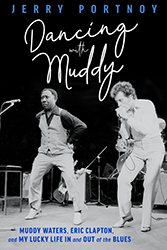Another successful entry in this series of short biographies for the elementary upper grades — the publisher grades it as for ages 9 – 12 — joins earlier volumes about musicians such as Scott Joplin, Duke Ellington, Frederic Chopin, George Gershwin, Bach, Beethoven, and others. A hand-me-down piano from Bernstein’s aunt changed his life in childhood and set him up for conflicts with his father, who wanted Leonard, the oldest son, to go into the family business. He became an overnight sensation when, at age 25 and with only a few hours notice, he conducted a concert that was broadcast across the entire country. His life was shaped by relationships with famous conductors such as Dmitri Mitropoulos, Serge Koussevitzky, and Fritz Reiner, all of whom recognized his great talent. An entire generation of Americans were later introduced to serious music through Bernstein’s compositions for plays, films, and television programs. He was famous as a composer, a conductor, a pianist, and a teacher.
At the beginning of each chapter is one page with historical information on an event going on in the world at the same time as the events in the biographee’s life. Examples are the influenza epidemic of 1918, the Berlin Wall and the establishment of the State of Israel. The book is illustrated with photographs at the beginning of each chapter.
A sense both of Bernstein’s enormous contribution to American culture and the events in the world during his lifetime are clear to the reader. The series is visually appealing, interestingly written, and contains a lot of information. The Jewish component is strong in this particular volume, because of Bernstein’s Jewish upbringing and his connection to the community. Recommended for children in grades 4 – 7.





